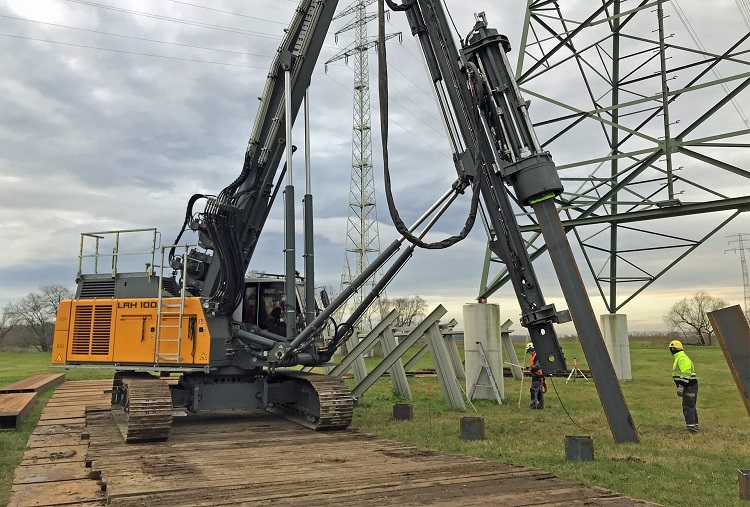In the evolving landscape of personal and professional growth, the concept of “slip rong” emerges as a transformative approach to handling errors and setbacks. Originating from a philosophy that encourages learning from mistakes, slip rong is rapidly becoming a significant subject of interest among thought leaders and organizations. This article provides a comprehensive understanding of slip rong, unfolding its basics, exploring its growing popularity, addressing common concerns, and illuminating its practical applications. We delve into how slip rong has evolved, touching on trends and statistics that highlight its increasing relevance. Through addressing FAQs and the challenges associated with slip rong, readers can gain a balanced perspective. The article further outlines the myriad of benefits that come with utilizing slip rong in various scenarios and casts a glimpse into the future prospects and potential new domains for its application. Concluding with a recap of key insights, this piece calls for a broader participation and further exploration into the enriching world of slip rong.
The Slip Rong
What IS the Unseen Slip Rong
In a world brimming with endless streams of information and a myriad of interactions, the phenomenon of “slip rong” emerges as an intriguing subject of discussion. The term itself evokes curiosity, inviting one to delve deeper into its essence and significance. But what exactly is slip rong? At its core, slip rong represents the often unforeseen mistakes or errors that occur in various spectrums of our lives—technology mishaps, communication blunders, or even decisions gone awry.
The Growing Interest in Slip Rong
In an age where perfection is highly sought after yet rarely achieved, understanding the intricacies of slip rong has become increasingly vital. It’s no longer just about acknowledging these slip-ups but exploring their depths, origins, and, importantly, how they can lead to unexpected outcomes or learning experiences. The concept of slip rong, while not universally defined, touches upon the fundamental human condition of error-making and the growth that can arise from it.
Why Slip Rong Matters
Slip rong’s significance is underscored by its omnipresence. In the high-speed digital era, where decisions are made in split seconds and the impact of errors can be monumental, recognizing and navigating slip rongs is crucial. From software development to interpersonal communications, understanding slip rong equips individuals and organizations with the foresight to prevent potential mistakes and the resilience to address them constructively when they occur.
In highlighting the imperfections inherent in human and systemic endeavors, the discourse surrounding slip rong opens up avenues for learning, innovation, and ultimately, improvement. This exploration is not just about mitigating errors but embracing them as catalysts for development and human connection.
Real-world Resonance
Consider the story of a technology startup that embraced its software development slip rongs as opportunities for innovation, leading to the creation of a groundbreaking new app. Or the tale of a community that came together to rectify a slip rong in communication, fostering stronger bonds and understanding among its members. These examples illuminate how slip rongs, when approached with openness and intention, can transform challenges into milestones of progress.
As we delve into the following chapters, we will explore the multifaceted nature of slip rongs across different domains, shedding light on their impact, methodologies for their identification, management strategies, and the profound lessons they can teach us. Join us on this compelling journey into the world of slip rong—a journey of reflection, discovery, and growth.

The Basics of Slip Rong: Understanding the Concept
As we venture deeper into the exploration of slip rong, it’s quintessential to establish a foundational understanding of this concept. Slip rong, while not a term commonly found in dictionaries, captures a range of experiences and incidents that are universally understood. This section aims to delineate what slip rong encompasses and dissect its components, making the elusive more tangible.
Defining Slip Rong
Slip rong can be envisioned as the occurrence of unintended outcomes arising from actions, decisions, or processes that deviate from the expected or desired path. It’s the hiccup in the seamless execution of plans, the error in calculation that brings about a different result, or the misunderstanding that leads to a communication breakdown. In essence, slip rong embodies those moments of imperfection that punctuate the human experience, spelling out a broader narrative of trial, error, and learning.
Components of Slip Rong
To understand slip rong in depth, let’s break it down into its core components:
- The Trigger: Every slip rong begins with a trigger, an action or decision that sets the scene for an unintended outcome. This could be a seemingly innocuous choice that leads to a complex problem or a well-intentioned decision that misses its mark.
- The Deviation: This is the heart of slip rong—the point where the outcome begins to stray from the intended path. The deviation could be minute or monumental, but it is always pivotal to the unfolding of a slip rong scenario.
- The Outcome: The culmination of slip rong is the outcome, which is often unexpected and can range from mildly inconvenient to critically impactful. It is this outcome that usually draws attention to the slip rong, prompting analysis and response.
- The Lesson: Not necessarily a component but an integral aspect of slip rong is the lesson it imparts. Within every slip rong lies the potential for insight, improvement, and growth, making it an invaluable aspect of personal and organizational development.
Real-World Illustration
Consider the case of a major technology company that released a software update intended to enhance user experience. The Trigger was the decision to deploy the update; the Deviation occurred in the form of a coding error that led to data loss for a small percentage of users; the Outcome was a flurry of customer complaints and a temporary dip in user trust. However, the Lesson learned in navigating this slip rong was the company’s sharpened focus on rigorous testing and customer feedback loops, significantly improving product reliability and customer satisfaction in the long run.
This example underscores the multifaceted nature of slip rong and highlights how a deeper understanding of its components can equip individuals and organizations to better anticipate, navigate, and learn from these instances.
Grasping the basics of slip rong lays the groundwork for a more nuanced appreciation of its implications and applications. While slip rongs can present challenges, they also offer rich opportunities for learning and growth. As we move forward, keep these components in mind—they are the keys to unlocking the constructive potential embedded in every slip rong scenario.
The Growing Popularity of Slip Rong
In an era where the pace of change is unprecedented, the phenomena embodied by “slip rong” have cast a spotlight on the importance of adaptability, learning, and resilience. As we navigate through various technological, social, and economic transitions, slip rong has evolved from being merely an overlooked aspect of human error to a concept that is gaining significant attention across various sectors.
Trends in the Evolution of Slip Rong
Initially, the focus on slip rong was primarily limited to fields with evident risk for error, such as aerospace and healthcare. However, as the digital transformation accelerated, the relevance of understanding and managing slip rongs became universally recognized. Social media and the global connectivity it offers have brought slip rong incidents to the forefront of public attention, showcasing the widespread impact of these occurrences across all walks of life.
One trend that illustrates the growing focus on slip rong is the increasing investment in technologies like AI and machine learning to predict and mitigate errors in both industrial processes and daily activities. Another trend is the proliferation of “failure conferences” and “fuckup nights,” where entrepreneurs and professionals publicly share their stories of slip rongs, emphasizing the lessons learned rather than the failures themselves.

Statistics and Research on Slip Rong
Quantifying slip rong in concrete statistics is challenging due to its broad and often subjective interpretation. However, some research findings highlight the significance and impact of slip rongs in specific contexts:
- Corporate Impact: A study from the University of California found that companies that foster an environment where employees can report and learn from slip rongs without fear of retribution are 25% more productive than those that penalize mistakes.
- Technological Errors: Research in software development indicates that minor slip rongs in coding, overlooked during the initial stages of production, can increase the project’s cost by up to 150% if not identified and corrected early.
- Healthcare Implications: According to a report by the World Health Organization, slip rongs in healthcare—ranging from surgical errors to incorrect medication prescriptions—contribute to 1 in every 10 patients receiving harm during hospital care in high-income countries.
These statistics and findings illuminate the vast scope and impact of slip rongs, underscoring the critical need for strategies and solutions to manage and learn from these occurrences.
Navigating the Popularity of Slip Rong
The rising awareness and understanding of slip rong present both challenges and opportunities. For individuals and organizations alike, the key lies in developing a culture that not only acknowledges the inevitability of slip rongs but also actively embraces them as opportunities for improvement and innovation.
Addressing Misconceptions: A prevalent misconception is that acknowledging slip rongs equates to accepting mediocrity or fostering a lackadaisical attitude towards errors. On the contrary, recognizing slip rongs is about promoting a proactive and constructive approach to learning from mistakes, ultimately driving excellence and achievement.
Actionable Advice: To capitalize on the learning opportunities slip rongs present, it is advisable to:
- Implement robust feedback mechanisms that encourage open communication about slip rongs.
- Foster a culture of continuous learning and improvement, where slip rongs are analyzed and used as stepping stones for growth.
- Leverage technology to predict and prevent potential slip rongs, especially in high-stakes environments.
By understanding the trends and statistics associated with slip rong and embracing the insights they offer, individuals and organizations can navigate the challenges of a rapidly changing world more effectively, turning potential stumbling blocks into stepping stones for success.
Common Concerns About Slip Rong
“Slip rong” has become a term enveloped with curiosity and, at times, concern. As its understanding and application have widened, so have the questions surrounding it. By addressing these frequently asked questions and challenges, we aim to demystify the concept and provide clarity.
Challenges and Controversies Associated with Slip Rong
The Blame Game: One of the foremost challenges surrounding slip rong is the tendency to attribute blame to individuals involved, rather than examining systemic issues that may have contributed. This can stifle open discussion and hamper the learning process.
Balancing Prevention with Innovation: In certain sectors, an overemphasis on preventing slip rongs can lead to a risk-averse culture that potentially stifles creativity and innovation. Finding a balance where slip rongs are minimized, but innovation is still encouraged, is a delicate task for many organizations.
Quantification and Measurement: Measuring the impact of slip rongs and the effectiveness of strategies implemented to combat them is another challenge. Without concrete metrics, evaluating progress or pinpointing areas for improvement can be difficult.
Real-World Example
The infamous case of a major corporation experiencing a data breach due to a seemingly small oversight in their security system serves as a relevant example. The slip rong occurred when a minor software update left a vulnerability unaddressed. The challenge was not only to rectify the breach but also to overhaul the security protocols to prevent similar occurrences in the future. The controversy arose from the tensions between the need for rapid innovation and the imperative for stringent security measures.
Actionable Advice
Equip your organization with a clear protocol for responding to slip rongs to ensure a swift and coordinated reaction. Emphasize the need to learn from each slip rong to build a stronger, more reliable system for the future. Maintain a balance between the need for innovation and the necessity of risk management to create a dynamic yet secure environment.
By addressing common concerns and questions, elucidating the challenges, and providing real-world context, we can transform the conversation around slip rong from one of apprehension to one of proactive engagement and continuous improvement.

Practical Applications of Slip Rong
Understanding and employing “slip rong” effectively can transform how organizations and individuals approach errors and setbacks. This chapter explores the practical applications and significant benefits of integrating slip rong into various settings, aiming to foster a culture where each slip rong becomes a stepping stone towards greater efficiency and innovation.
Usage of Slip Rong in Various Scenarios
In Corporate Environments:
Corporations can apply the concept of slip rong by creating systems for reporting and analyzing errors. For example, a multinational company might implement a digital platform where employees anonymously report mistakes. These are then reviewed during monthly meetings where rather than focusing on culpability, the emphasis is on what can be learned and how similar mistakes can be prevented.
In Education Systems:
Educational institutions can integrate slip rong into their curricula by encouraging students to explore and experiment without the fear of failure. For instance, implementing a grading system that rewards innovative approaches and learning from mistakes can promote a deeper understanding and retention of knowledge.
In Healthcare Settings:
In healthcare, slip rong applications can lead to improvements in patient safety. Hospitals might use slip rong analyses to modify procedures, enhance staff training, or improve patient handling protocols, thus reducing the occurrence of medical errors and improving care quality.
In Technology Development:
Software and hardware development teams can use slip rong as a crucial part of their testing phases. By intentionally incorporating errors or ‘bugs’ to see how systems react, developers can create more robust solutions and enhance the safety features of products before they go to market.
In Public Policy Formation:
Governments can utilize slip rong by instituting policies that require error reporting and analysis for major public projects, ensuring that lessons are learned and shared across departments to enhance the efficiency and effectiveness of public services.
Benefits of Engaging with Slip Rong
Enhanced Learning and Innovation:
A proactive approach to slip rong facilitates an environment where learning is continuous, and innovation is encouraged. By analyzing what went wrong, new and often more effective methods are discovered, which can lead to breakthroughs in various fields.
Increased Resilience and Adaptability:
Organizations and individuals that embrace slip rong typically develop greater resilience, as they are accustomed to facing challenges and responding positively to them. This adaptability becomes a crucial asset in today’s rapidly changing world.
Improved Risk Management:
Understanding the nuances of how slip rongs occur can dramatically improve an entity’s ability to manage risks. Recognizing potential pitfalls before they manifest and planning contingencies make organizations more robust and less prone to catastrophic failures.
Cultural Transformation:
Incorporating slip rong into the core values of any institution can lead to a profound cultural shift where transparency, openness, and honest communication are valued. This transformation can lead to higher employee morale and greater overall effectiveness.
Real-World Example:
A leading e-commerce company showcased how embracing slip rong could lead to substantial business improvements. After experiencing a significant system outage due to an overlooked flaw in their IT infrastructure, the company initiated a ‘lessons learned’ workshop to delve into the incident. The outcome was not only the resolution of the initial flaw but also an enhanced disaster recovery plan and better-trained staff, which improved service uptime and customer satisfaction.

Conclusion and Actionable Advice
Embracing slip rong involves shifting perspectives from viewing errors as setbacks to seeing them as insightful learning opportunities. To practically apply slip rong, organizations should:
- Establish safe spaces for reporting and discussing errors.
- Promote policies that incentivize transparency and knowledge sharing.
- Invest in training that focuses on error management and corrective action.
By understanding and applying the principles of slip rong, we can usher in a new era of organizational and personal growth built on the foundations of continual learning and resilience. This proactive approach not only mitigates risks but also drives innovation, ultimately contributing to a more knowledgeable and prepared society.
Future Prospects of Slip Rong
As we continue to navigate an increasingly complex and integrated world, the potential of slip rong to shape industries, technologies, and societal norms becomes more evident. This chapter offers a forward-looking view on how slip rong might evolve and be harnessed in the future, providing predictions and shining a light on emerging opportunities across sectors.
Predictions on the Future Impact of Slip Rong
Normalization of Error Reporting:
It’s anticipated that the mentality toward errors will undergo a paradigm shift across professional landscapes. Organizations will likely standardize the practice of transparent error reporting, incorporating AI-driven analytics to understand and respond to slip rongs more effectively. This could have the effect of normalizing slip rongs to the point where they’re considered as valuable as direct accomplishments.
Implementation in AI and Machine Learning:
As artificial intelligence (AI) and machine learning (ML) evolve, the principles of slip rong are expected to integrate closely with these technologies. By programming AI to recognize, admit, and learn from errors autonomously, there could be a significant jump in the rate at which these systems evolve and improve, leading to more intelligent and self-reliant technologies.
Integration with Risk Management Frameworks:
The concept of slip rong may become a foundational element within risk management. Predictive modeling could leverage historical slip rong data to foresee potential future errors more accurately, thereby enabling preemptive measures that guard against the unknown with greater efficacy.
Emerging Opportunities for Slip Rong Utilization
Sustainable Development:
In sustainable development, slip rong can drive innovation to create processes and products that are both environmentally friendly and economically viable. The circular economy, which aims to eliminate waste through the continuous use of resources, presents fertile ground for applying slip rong principles to discover more sustainable business models and consumption patterns.
Space Exploration:
The space industry could benefit immensely from slip rong practices. Here, the cost of failure is exorbitantly high, both in terms of resources and human risk. Incorporating a culture that aggressively learns from every setback could accelerate the development of safer, more reliable space travel technologies.
Urban Planning and Smart Cities:
As cities become smarter and more connected, slip rong could help urban planners design adaptable and resilient infrastructures. By learning from every traffic jam, energy failure, or infrastructure inefficiency, and iterating on these shortcomings, smart cities could develop organically to become incredibly efficient self-adjusting systems.
Health and Wellness Industries:
The health and wellness sectors show promise for slip rong application in the future. With personalized medicine on the rise, learning from individual patient responses to treatments could revolutionize medical practices, leading to more customized care protocols and ultimately better health outcomes.
Real-World Example:
The world witnessed the potential of slip rong when a leading automotive manufacturer experienced a major setback with its autonomous driving technology. A slip rong occurred during a public demonstration when the vehicle confused a white side panel of a truck for a bright sky, leading to an accident. The manufacturer used this event to perform a detailed analysis, which resulted in a software upgrade improving vehicle sensors and AI decision-making processes. This initiative not only prevented future occurrences but also set new industry benchmarks for safety and reliability in autonomous vehicle software.
Conclusion and Actionable Advice
Slip rong, with its limitless potential, is poised to become a cornerstone in shaping a more resilient and dynamic future. Organizations and individuals keen on remaining relevant must:
- Foster an environment that embraces slip rongs as learning opportunities.
- Invest in technologies that can analyze and implement learnings from slip rongs.
- Keep a forward-thinking mindset, exploring how slip rong principles can be applied to new sectors and challenges.
Adopting a proactive stance on slip rong opens up a world where each mistake propels us faster and further along our collective journey of progress and discovery. With the right tools and mindset, we can turn slip rongs into a driving force for innovation and continual improvement, laying the groundwork for a future that is not only more forgiving of errors but uses them as fuel to reach new heights.
The Significance of Slip Rong Moving Forward
As we conclude our exploration of slip rong, it is crucial to crystallize the insights gathered and the compelling narratives we’ve traversed. Slip rong, far from being a mere buzzword, represents a profound paradigm shift in how we perceive, engage with, and learn from mistakes. It’s an ethos that encourages openness, resilience, and continuous improvement.
Summary
We commenced this journey by introducing slip rong, illuminating its genesis and the growing intrigue around it. At its core, slip rong embodies the philosophy that mistakes are not detours but integral parts of the roadmap to success. Delving into the basics, we attempted to unfurl what slip rong entails, outlining its definitional contours and the essential components that constitute its framework.
The narrative then transitioned into highlighting the burgeoning popularity of slip rong, underscored by evolving trends and reinforcing statistics. This surge in interest is not unfounded but is anchored in the tangible benefits and the transformative potential slip rong holds across various spectrums of personal and professional endeavors.
Addressing common concerns and questions next, we strived to demystify slip rong, shedding light on frequent misconceptions and laying bare the challenges it poses. This dialogue aimed to foster a more nuanced understanding and encourage informed engagement with the concept.
Furthermore, our discourse navigated through the practical applications of slip rong, celebrating its versatility and impact. From individuals learning to embrace and learn from personal setbacks to organizations integrating slip rong into their operational ethos—its utility spans wide and deep.
Peering into the horizon, we pondered the future prospects of slip rong, speculating on its evolutionary trajectory and the emerging opportunities it heralds. It’s a vista replete with possibilities, beckoning pioneers to carve new paths and create innovative solutions.
Call to Action
Yet, our exploration doesn’t end here—it merely marks the beginning of a deeper, more personal journey with slip rong. You, the reader, are poised at an exciting juncture. We invite you to take this concept, explore it further, and weave it into the fabric of your life or organization. Ask questions, experiment, and most importantly, don’t shy away from slip rongs.
Engage with communities that champion slip rong. Share your stories and listen to others’. Let’s cultivate a culture that doesn’t just tolerate errors but celebrates the growth and learning emanating from them. Whether it’s through professional forums, social media discussions, or academic research, your participation and voice can elevate the dialogue around slip rong, shaping a future where mistakes are the milestones of progress.


